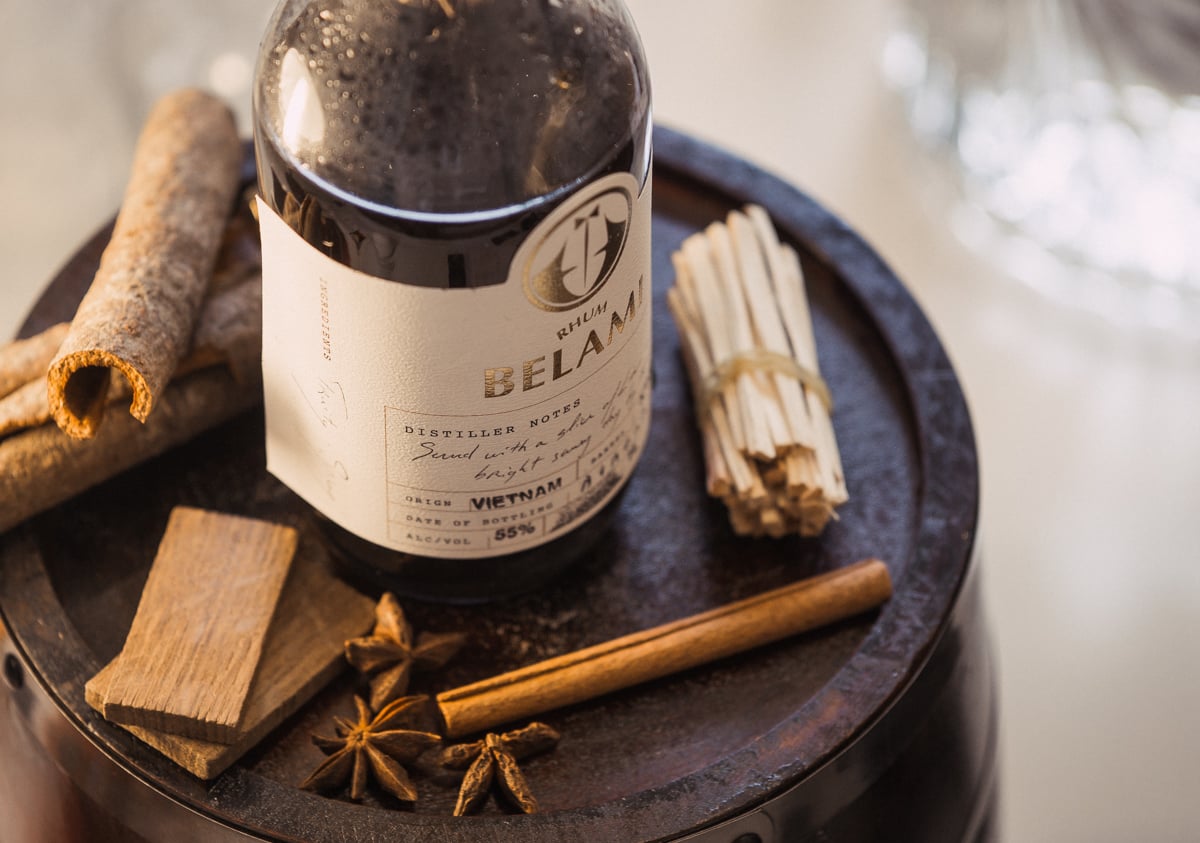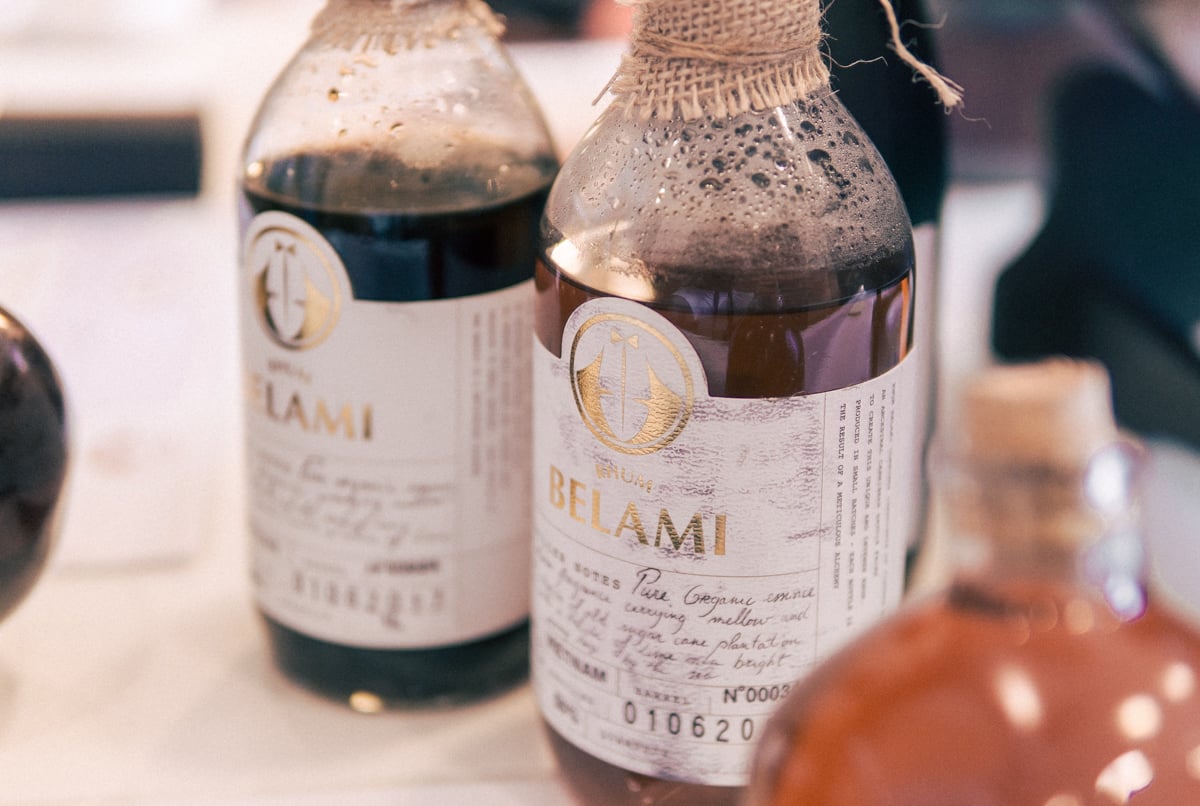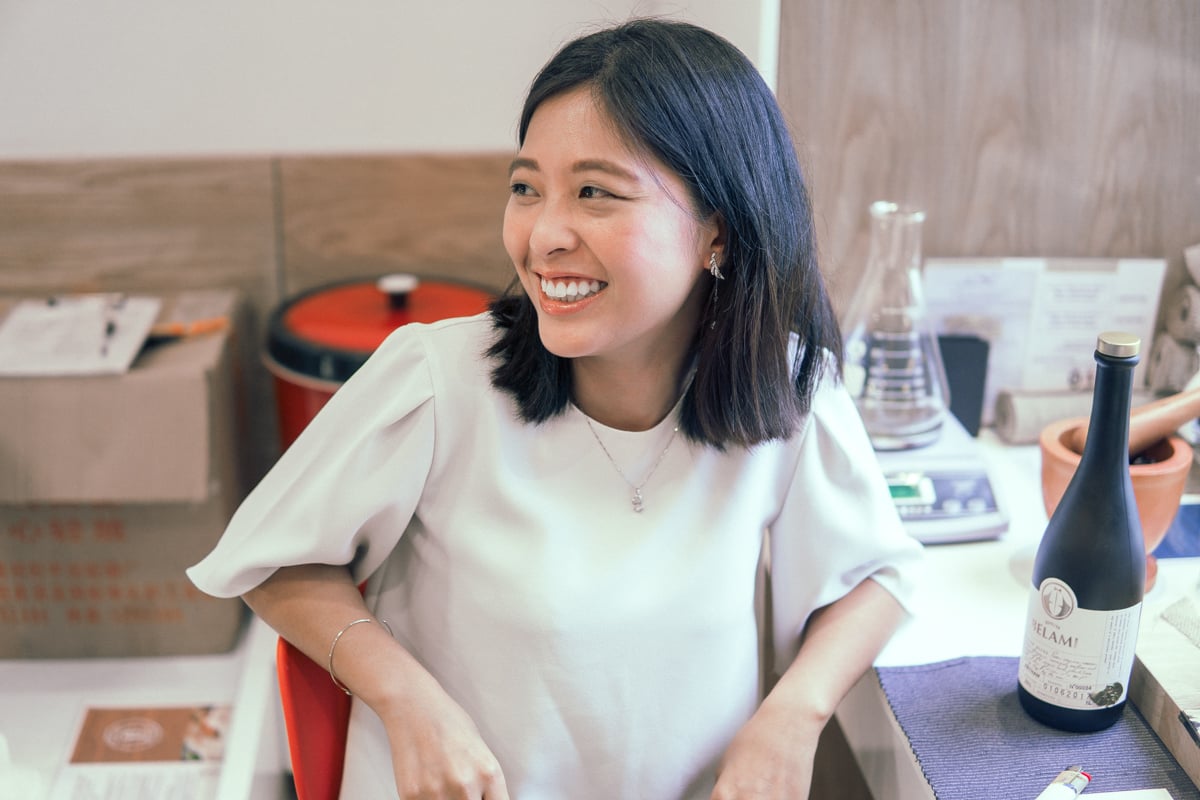We recently met with the founder of the very first brand of Vietnamese premium rhum: Roddy Battajon. Roddy arrived in Ho Chi Minh City about a year ago with 10 years of food and beverage experience on his belt. He’s here to democratize rhum consumption in Vietnam and in Southeast Asia. We chat with him about his interests and what trends he’s seeing in the alcohol market in Vietnam.

What kickstarted your interested in food, beverage, and alcohol?
F&B is about sharing. Sharing nice products and sharing your passion. This culture of sharing comes from my family. I come from the Caribbean, with a mother from Martinique (where I grew up) and an Italian father. Both cultures embrace the values of sharing.
At the very beginning I wanted to be a lawyer. But when I was 16, I worked in the restaurant business for the summer. And that’s where I met a chef who showed me his passion and his cuisine. So after those teenage summers, coming back to the classroom was boring as hell. So I made my own professional choice to pursue the food and beverage business, that’s when I arrived in Paris.
There, I worked in many different places such as Charlie Birdy and La Bulle, which is one of the best European bistronomique featuring an amazing wine list, among other hallmark options. One of my memorable experiences in Paris was at the Moonshiner, a hidden gem and one of best spots to have an amazing cocktail. At Moonshiner, I learned everything about mixology, how to prepare beers, gins and other alcohol.

Why did you choose to continue your passion in a country like Vietnam?
In France, we place an immense value on high quality products and beautiful craftsmanship. For many in France, you’ll find that in food and beverage or mixology. But in some countries like Vietnam, this culture and appreciation is beginning to grow, but it’s still very small.
I chose Vietnam for this challenge: spreading the culture of quality. I looked at different perspectives and opportunities. With its 6% annual GDP growth, I knew that Vietnam would have opportunities to explore. Plus, I didn’t want to switch Paris for another expensive and large city such as Hong Kong or Singapore. I’d rather choose a country with more to offer and is also affordable at the same time.
I came here a year ago with almost no money in the pocket. I couldn’t even afford to rent an apartment so I spent a couple of months on my friend’s couch.

Where did you work at first?
My first job was at An Café Saigon. Then I worked at Bếp Mẹ ỉn. In Vietnam, I’ve found that the biggest issue in the restaurant business is the service. In Vietnam, an improvement in the service experience is needed. That was my focus when I took on my first jobs in Vietnam. After that I worked at Cocotte. I helped them to launch the project. I enjoyed working with their concept. We worked on the same page, it was a great experience working with them.
After 10 months of working in Vietnam and 10 years in F&B, I wanted to stop here and start something else.

Why did you choose to make rhum?
I grew up watching my grandmother make rhum. It was a process that I respected and enjoyed. Back in Vietnam, the culture of making rhum is non-existent and that was a real opportunity. You have to know that Vietnamese sugar cane is one of the best you can find. And nobody seems to know that. As it is the primary product for making rhum, it’s a great advantage to produce this alcohol here.
My goal is to give an alternative rhum to Vietnamese by providing a quality option produced in their own country. It’s a heavy responsibility to be the very first crafted rhum of Vietnam, it’s easy to make mistakes along the way and a large challenge to educate the market. I also want to pay tribute to Vietnam that welcomes me today. As most of the products here are imported, I want to emphasize “made in Vietnam” and to help bring it to a level of high quality.

What does the rhum market in Vietnam look like?
The Vietnamese rhum market is tiny. And the only Vietnamese brand, except mine, is the white rhum Chauvet. But to me, it has a very poor quality. Otherwise you have international brands such as Bacardi, Captain Morgan or Flor de Cana. Those brands are imported and then, after custom duties, prices are massive compared to quality.
In terms of consumption, Rhum Chauvet dominates the market thanks to their affordable prices (no custom duties) compared to imported options. Most of Bui Vien bars for instance are stocked with this brand.
In Vietnam you don’t have a desire to produce quality, whereas in some other Asian countries you can find it. One Thai brand received a gold medal recently.

In terms of understanding the laws of doing business in Vietnam, is it difficult to launch a strong alcohol brand here?
Juyee Cheng, my business partner, worked a lot on it. First I needed to open the company through a local partner. Concerning rhum, you need to send samples to the government in order to be sure that the product is safe. You need a license from the government to distill and you have to tell them how much quantity you will distill. I needed to declare the place of production as well (impossible to do it in District 1 for instance). And all those processes represent an amount of investment that you can hardly predict at the beginning.
As an artisan, it’s tough to go through that just in order to be legally clean.

What’s the process of producing rhum?
White rhum is easy to do. The primary product is sugar cane. You extract the juice from it. Then you boil the juice through an alembic which will separate the ethanol from the rest. Within this ethanol you have a tiny share of methanol which need to be controlled very carefully. That’s part of the alcohol that can make you blind if it’s not well managed. After extracting ethanol, you need to mix it with pure water (no minerals for instance). To know the quantity of water needed we use the Gay Lussac Law. To have a perfect miscibility between ethanol and water you need to have a temperature of 20 degree. And here you got your white rhum.
It becomes more difficult when you want to do dark rhum. To do so you need to associate products very well and the process in itself is very important. You can use fruits, wood, herbs, cacao, etc. You need to know precise quantities and how to introduce those products in your recipe. Timing is important as well. This whole process that will make your rhum unique. You need to work a lot on this part. I did 34 recipes before finding the one which fit perfectly my criteria.
There are different processes to make dark rhum:
- Keep the rhum in barrels over a long period of time
- Cold extraction
- Fermentation
When did you start making rhum?
The idea started at the end of 2016. We started to think about it seriously in December/January. We officially launched the brand Rhum Belami in April and sold our very first bottle in the same month.
Before selling this bottle we went through a long journey. I bought an alembic and spent 2 months testing and trying recipes until finding the best one.
The beginning was tough. Assembling and securing the alembic was complicated. Making alcohol is difficult and dangerous. So you need to test everything to be sure that the process is safe and, more important, that the product is safe as well. I guess you know that an alcohol incorrectly made can make you blind or even kill you… so, I spent a lot of time securing everything. Half of my invested capital was for security and safety.

Who are you working with?
We’re a team of three people. Tiny but a complementary team:
Juyee Cheng is our general manager. She takes care of the products sourcing: bottles, labels, ingredients needed for making our rhum unique. As she also owns a trading company. She is in charge of exporting our brand.

Christian Gazia is our designer. He provides us all we need in term of design, branding and manages our communication strategy. Currently based in Amsterdam, this artist/graphic designer, who lived 4 years in Vietnam, has his own website. And here is where you can see part of his work: christiangazia.fr
And I am focusing on the production and customer relationships.
What makes Rhum Belami unique?
To begin, Rhum Belami has almost no chemicals in it (only the essential ones) whereas most competition have rhums made of 6 to 10% of chemicals products (glycerin for instance). But then, we needed something to replace them so we came up with lot of different natural products such as turmeric or curcumin.
We positioned our rhum as premium in order to provide a real experience to the customer. More than just having a drink, we want the customer to live a journey through a simple sip of Rhum Belami. We want the customer to be pleasantly surprised at the quality of a uniquely Vietnamese rhum brand. Asking themselves what is it made of.
We asked ourselves “How to make something fruity and spicy without being too close to rhum arrangé and to stay with something as natural as possible”. We then used herbs, plants and woods to create a rhum which is close to a cocktail by itself. You won’t need to add anything.
What makes it unique is that it is the very first brand of premium rhum made in Vietnam.

What ingredients do you use?
Most of our products come from Vietnam, more than 90%. And we try to feature as many organic products as we can. We use Vietnamese sugar cane, passion fruit, pineapple, coconut, cacao bean…
Few know that Vietnamese sugar cane is one of the best you can find in the market
We also have some interesting products in our recipes such as Baobab powder from Africa, Goji berry, bandé wood from Martinique and even Kopi Luwak coffee beans.
That was the job of Juyee to find all those beautiful ingredients for our premium rhum. And she did a great job by finding products with amazing characteristics.

How many different rhums do you have?
We have three editions for the moment:
- Legacy Edition: this a fruity and spicy rhum that is perfect for many occasions such as enjoying a drink with friends in a bar.
- Premium Rhum: made of organic coconut, Kopi Luwak coffee beans, roasted chocolate, Bandé wood and other, its sweetness will perfectly fit with a dessert (I advise to drink it with a red fruits dessert)
- White Rhum: this rhum is still in process but I want it to herbs twisted: lemongrass, basilica for instance.

Your product and packaging look beautiful. How important is your branding?
Christian Gazia took care of this part. Thanks to his background, he has strong experience and knows what he’s doing. He wanted to stay within a generous branding plan with a font reminding of rhum. Concerning the logo, it was very complex to do. But at the end, I love the result. First you can see a gentleman’s silhouette but you can also see three palm leaves with the returned logo.
Christian gave me samples and the process to create a perfect label for the bottle. Every bottle is homemade and I personally write description on each label. You have the “RB” seal on each bottle in honor of my family and to guarantee quality.
I spend 30 minutes on the bottling and labeling of each Rhum Belami bottle.
What is the best way to taste Rhum?
Before tasting you need to take a look at what you are about to drink. Look at the coloration of the beverage and look at the tears of the rhum (such as the wine). After using your eyes, you will use your nose. Try to catch the most savory blend as you can. And more than catching them, try to identify them. Some aromas will be easy to recognize whereas some others will be tough.
It’s now time to taste it. Take a first sip and keep it in mouth in order, here again, to catch the maximum taste. After that, swallow it and enjoy the moment. Try to identify the travel of this sip within your taste buds and body. You then need to analyze the effects on your body: the heat, the spicy, the fruity, the wood, etc.
What is your favorite cocktail?
I really like caipirinha. Some people say that cachaça is not exactly rhum. But to me it’s like rhum, with its mix of lemon juice, sugar can and crushed ice. It’s beautiful.
Where can we enjoy Rhum Belami?
Here are some places where you can find our premium rhum:
- Anan Saigon, HCMC
- Cuba La Casa del Mojito, HCMC
- La Bodega, HCMC
- CohibaR, Đà Nẵng
- Factory 47, Đà Nẵng
- Trà tiên Huong: a tea shop in District 2 with a unreleased recipe of alcoholic bubble tea: the boba mojito.
We will soon appear in other places with events for celebrating our new partnerships such as:
- Woo Bar
- Lighthouse
- Mgallery
Who should we talk to next?
You should speak with Olivier Delmotte, the head of operations at L Concepts. He is the company’s head of operations for L’Usine and ‘NAMO.
